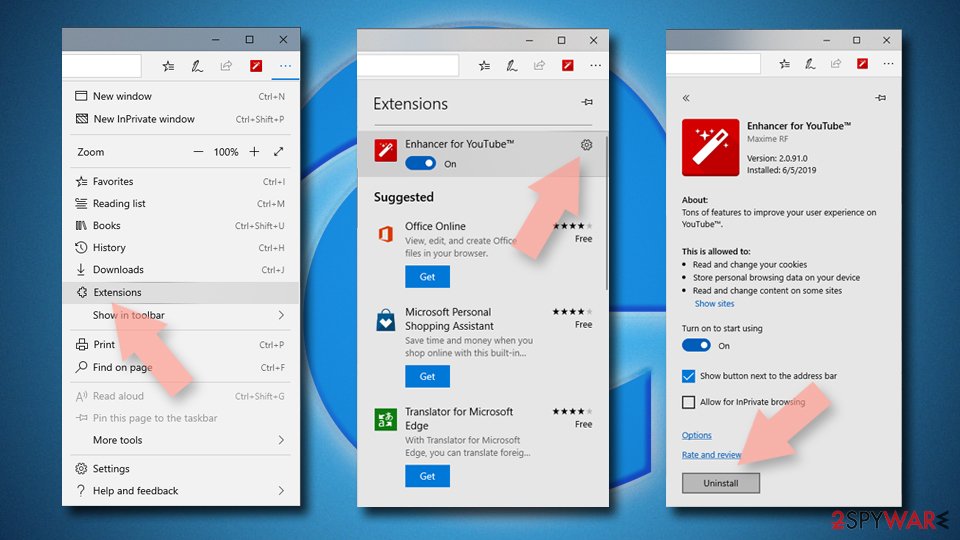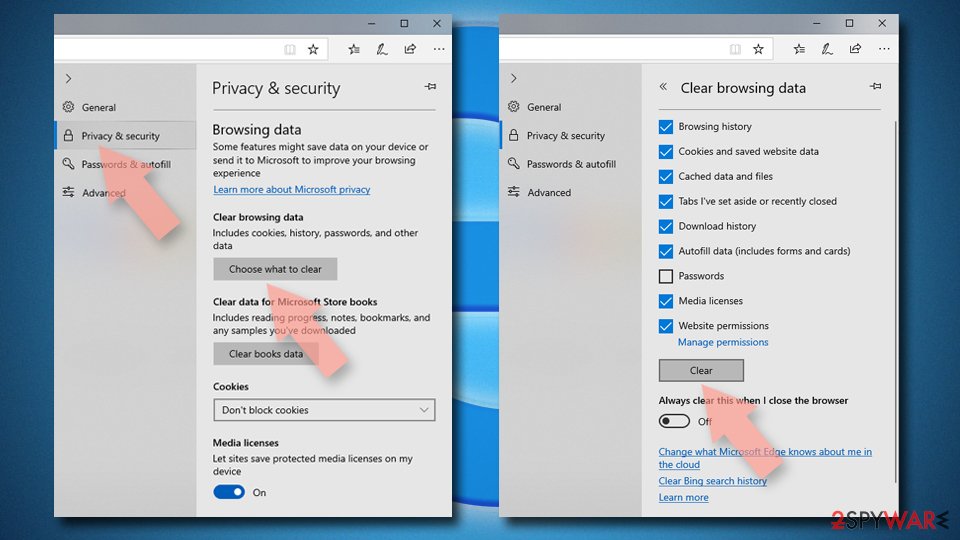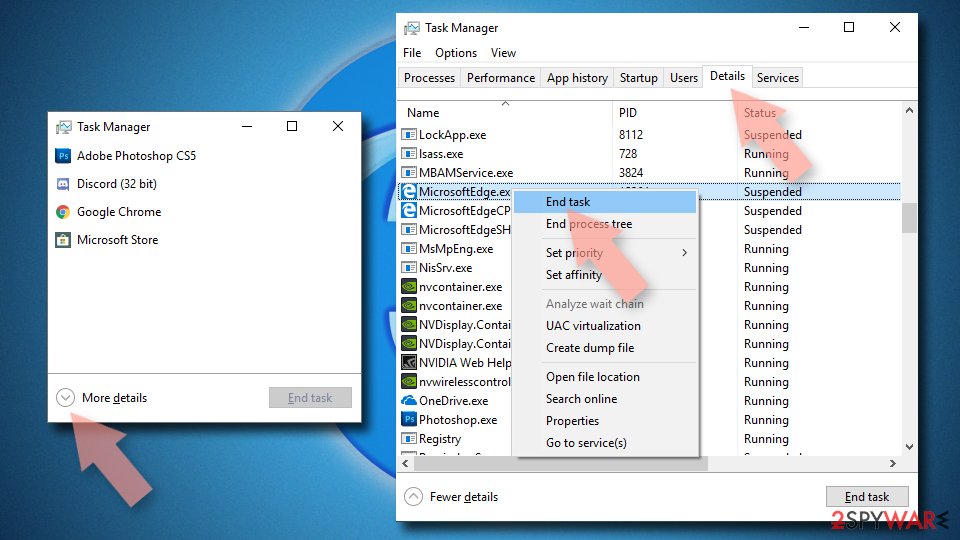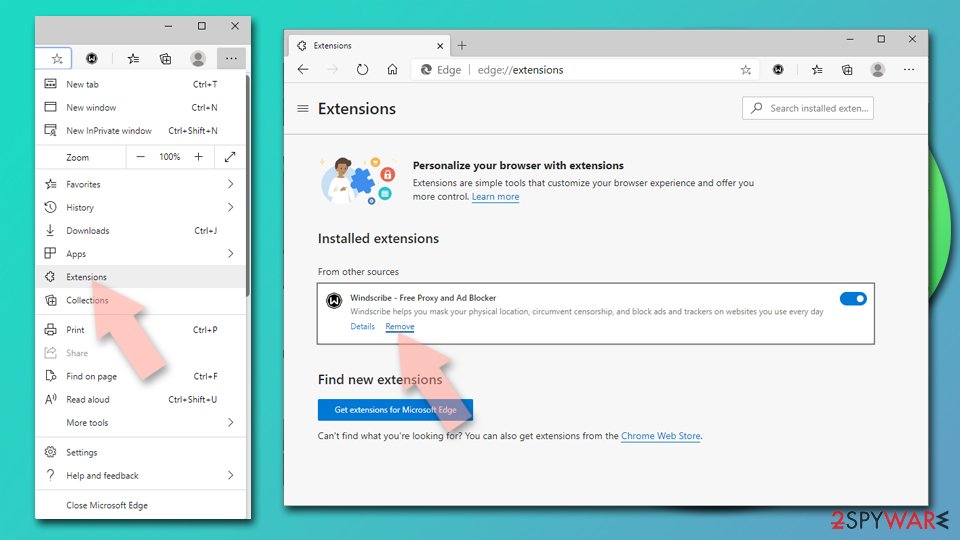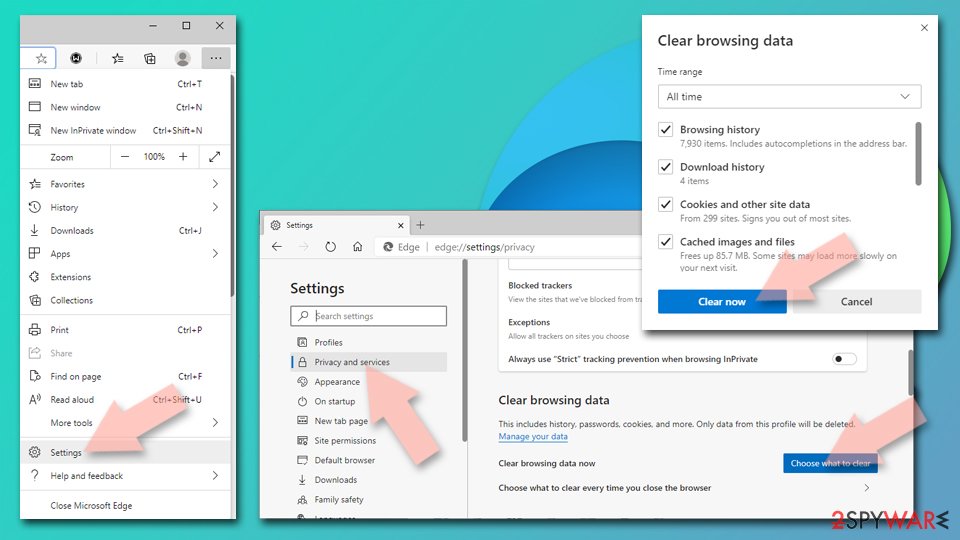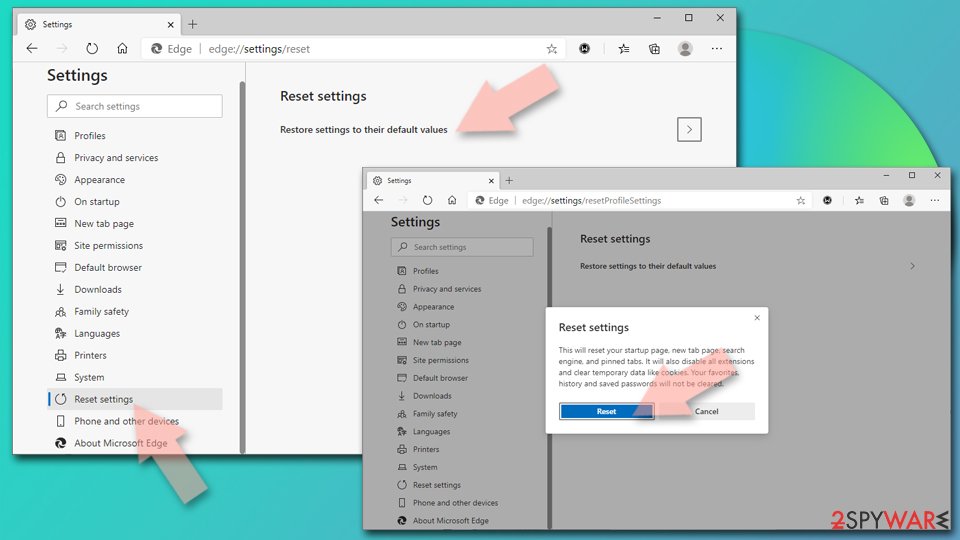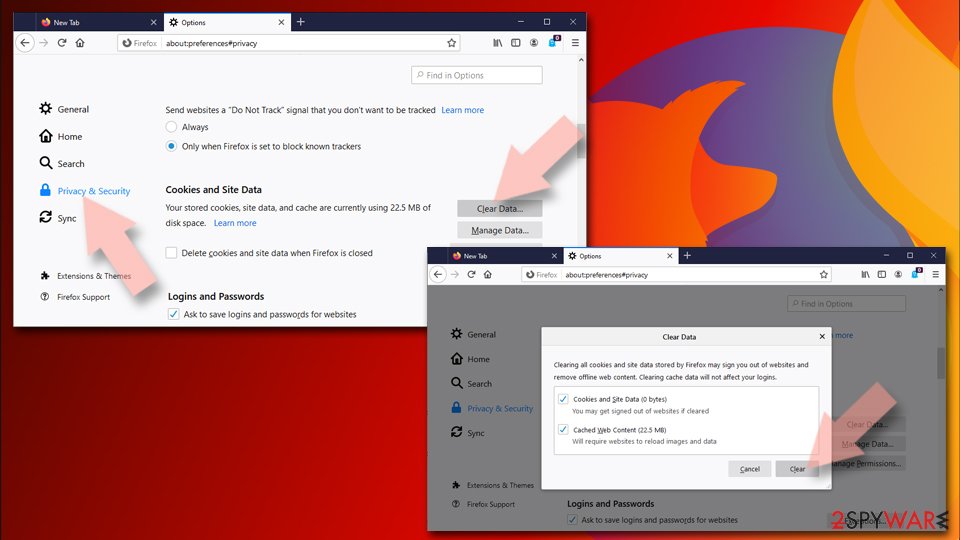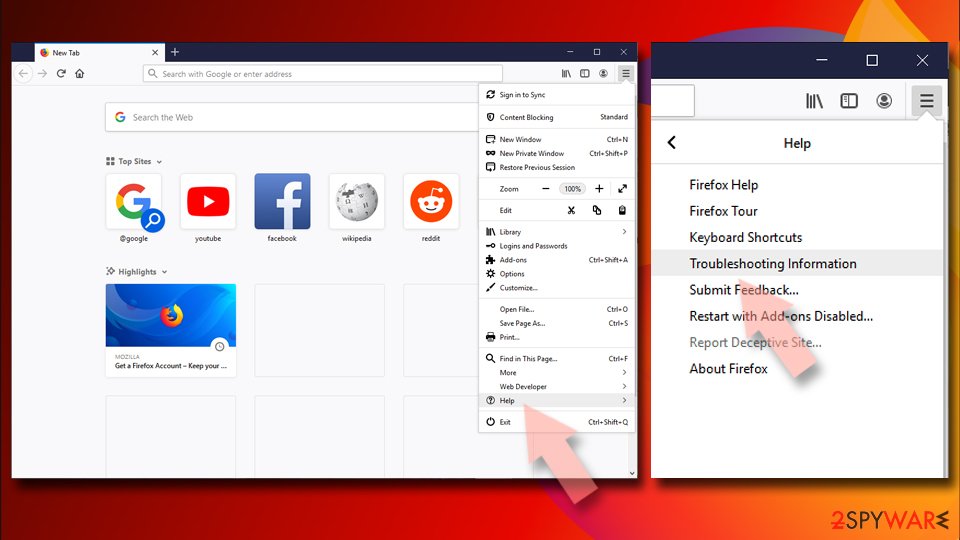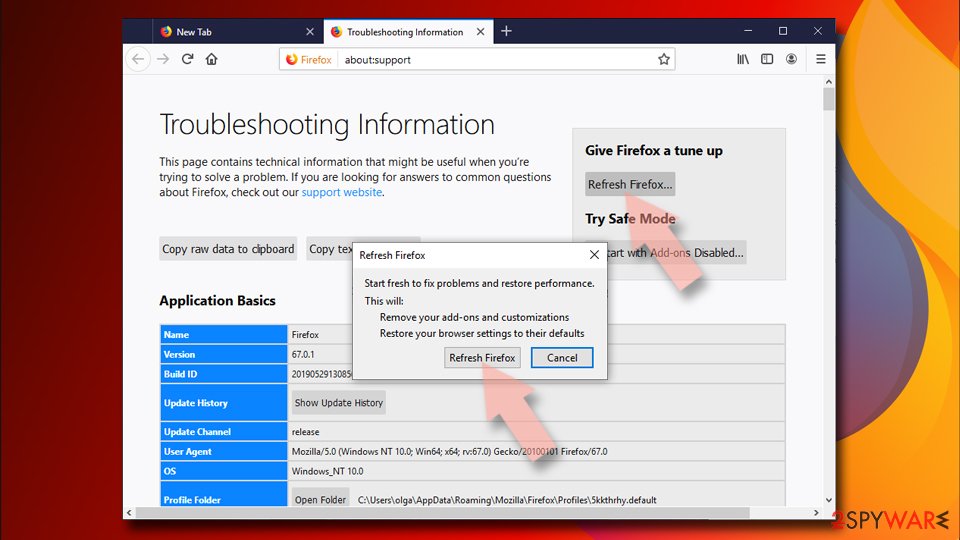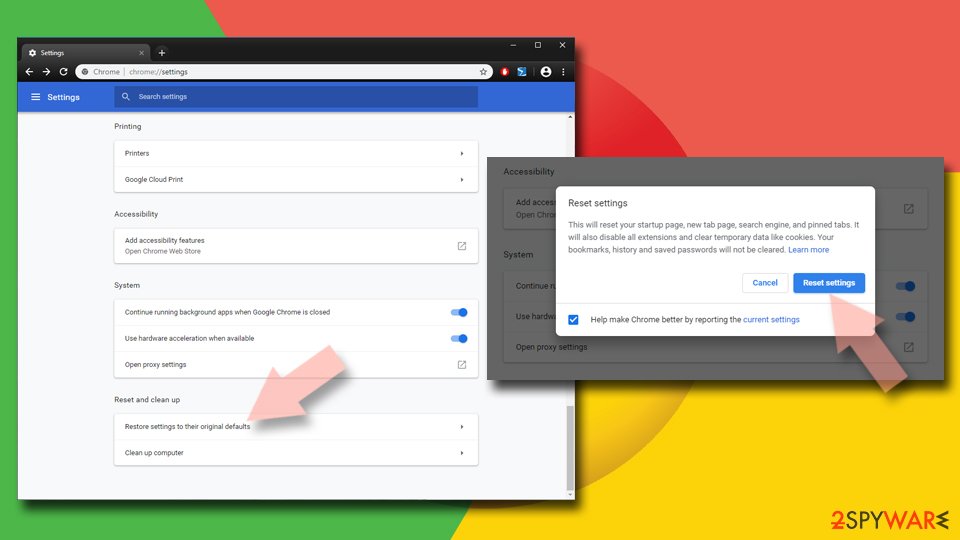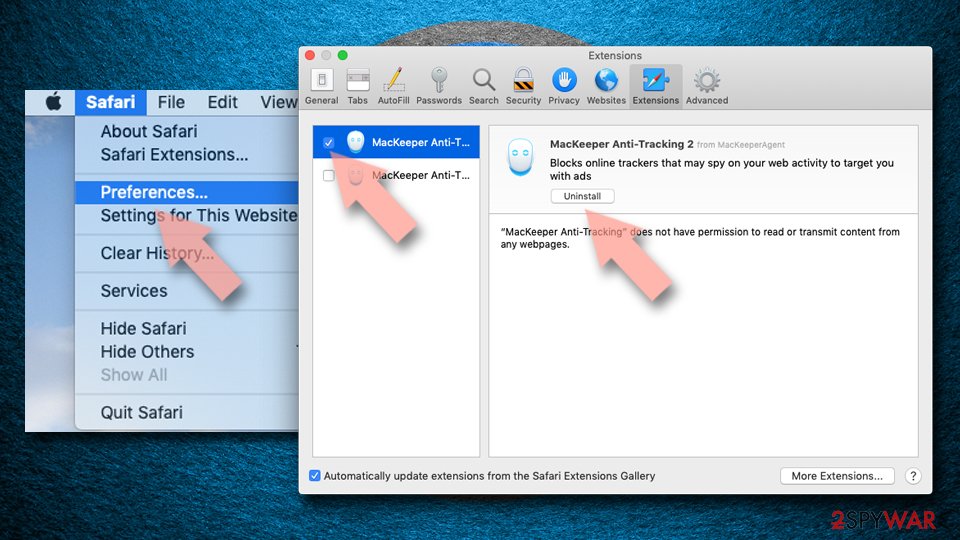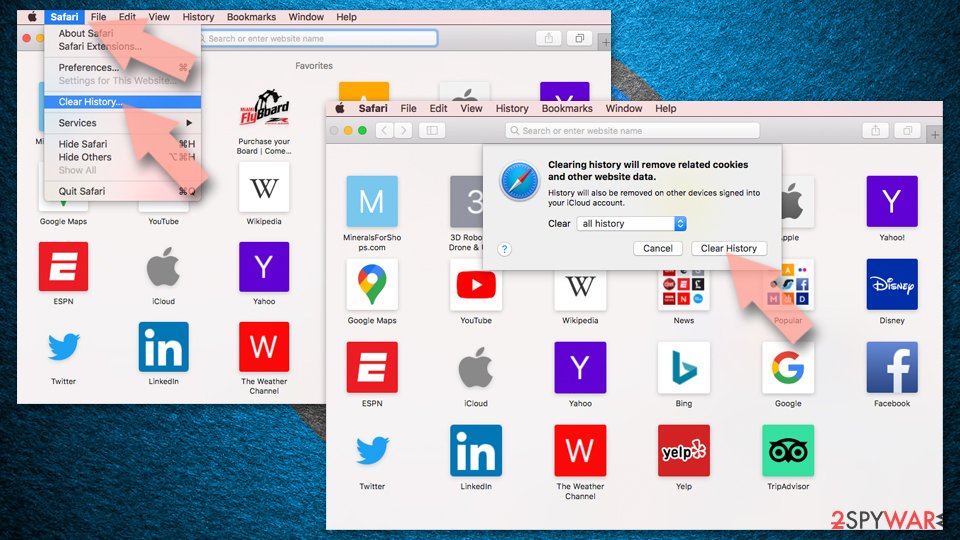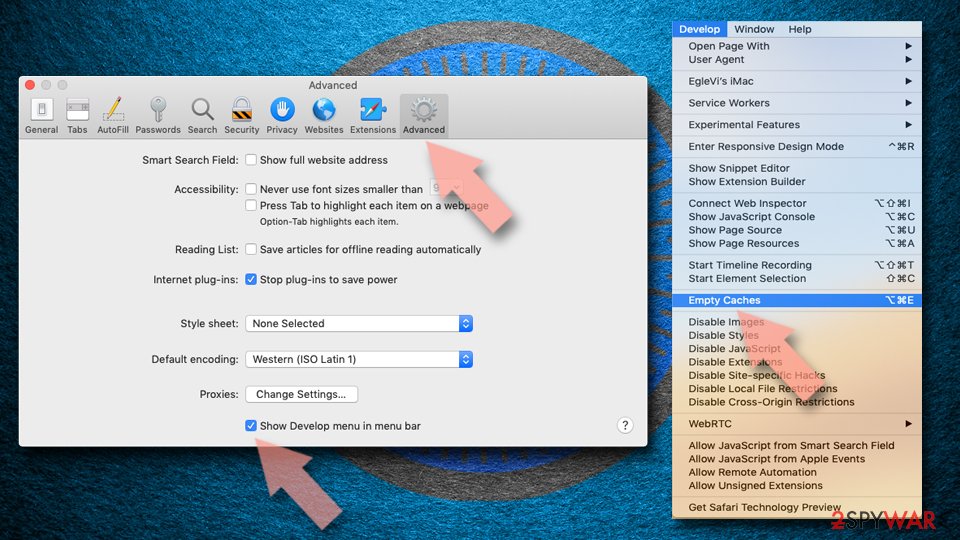Ketintontrat.info (Free Instructions) - Chrome, Firefox, IE, Edge
Ketintontrat.info Removal Guide
What is Ketintontrat.info?
Ketintontrat.info is a deceptive domain that urges users to enable notifications to spam them with endless ads
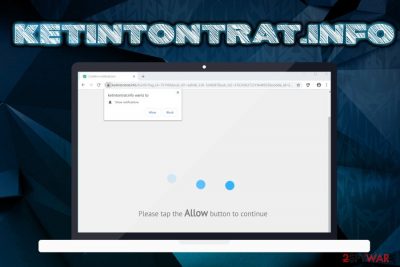
Ketintontrat.info is a redirect virus that modifies the settings of Google Chrome, Internet Explorer, Mozilla Firefox, Safari, Opera or other browsers in order to perform its suspicious activities. Applications that access the targeted machine and alter the way browsers behave without users' consent are called potentially unwanted programs. Unfortunately, such infections are sometimes hard to terminate due to their behavior and obfuscation tactics. Ketintontrat.info is one of many websites that users might get redirected to when they are infected with adware,[1] as such domains like a scam, phishing or even malware-laden ones soon becomes a daily routine. Users are also forced to view endless pop-ups, banners, deals, offers, promotions, and other commercial content. To remove Ketintontrat.info virus' redirection tendencies and other intrusive behavior, users need to find and terminate the unwanted program that is installed on their devices.
| Summary | |
| Name | Ketintontrat.info |
|---|---|
| Type | Adware/PUP/Push notification virus |
| Infiltration | Software bundling, third-party websites |
| Symptoms | Frequent redirects to suspicious sites, annoying pop-up ads, altered web browser settings, and similar intrusive behavior |
| Risk factors | Installation of bogus software, money loss, malware infection, personal information disclosure to unknown parties |
| Termination | Use security software or delete the threat manually by checking our instructions below |
| Optimization | To make sure your system is running well after PUP infection, scan it with FortectIntego |
Potentially unwanted applications like Ketintontrat.info are the pest of the internet and, while not the most dangerous programs out there, are most certainly the most annoying disturbances users have to deal with. Unfortunately, careless online behavior when infected with a PUP might lead to more severe consequences, such as money loss, malware infections or even identity theft.
Additionally, most PUPs collect a variety of information that can be later be sold for marketing purposes or even misused by cybercriminals. Therefore, if you notice redirects to Ketintontrat.info or similar sites, your browser is compromised, and it is best not to perform any bank transactions or take on online shopping – the data you enter might be stolen!
Ketintontrat.info is also social engineering attack that abuses the notification feature that is legitimate tool used by many to receive useful information from sites that are relevant to the particular user (nevertheless, many users are getting annoyed with the push notification pop-ups on most of the sites they visit, with around 52% disliking[2] the feature). However, as practice shows, many dodgy websites adapted this element to generate profits for unknown parties.
In fact, there are so many of push notification scam sites that those who are infected with adware are mostly linked to Parliery.info, Motheremutand.info, Robotcaptcha.info, and similar. As soon as users land on one of those, they are asked to enable notifications to view the alleged content of the site:
Ketintontrat.info wants to show notifications
Allow Deny
Never allow these notifications, as it will not enable the alleged video or other similar content. Simply leave the website and take care of Ketintontrat.info removal by either using security software or our manual removal guide below. After termination, we recommend scanning the device with FortectIntego for best results.
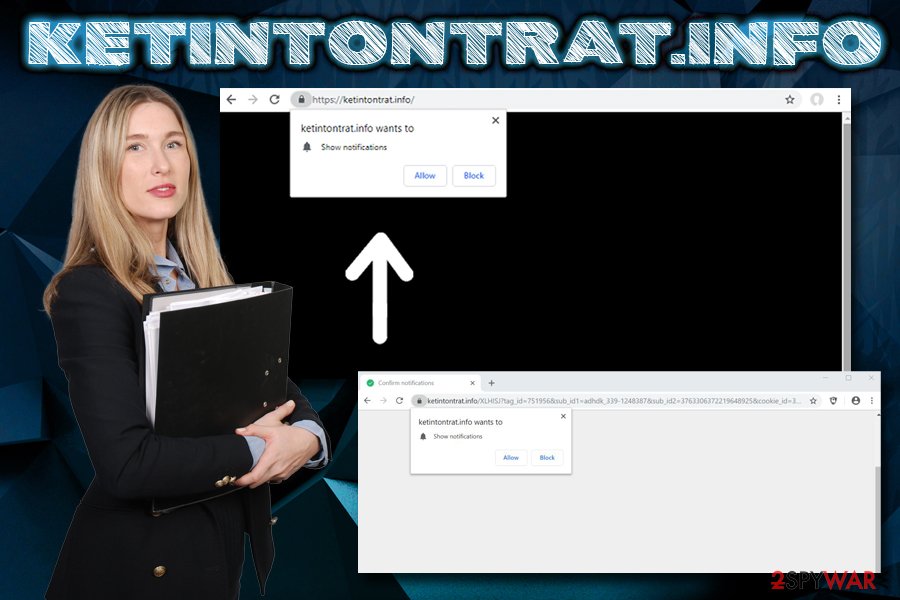
Programs downloaded from third-party websites often include PUPs
Most users are unaware of the deception that lies within software bundling. In fact, the scheme is engineered so that users are less likely to notice all the bonus programs during the installation procedure, as more installs lead to more profits for both freeware and PUP authors. Therefore, it is up to you to stop unwanted programs before they manage to enter your computer and alter web browser settings.
For that, you should never rush the installation procedure and always check if required documents are present (Terms of Service, Privacy Policy). Also, make sure you check every installation step carefully, as PUP the developers often use tricks like grayed out “Skip” buttons, pre-ticked boxes, etc. Finally, opt for Advanced/Custom mode instead of Recommended/Quick one – it will allow you to terminate all the optional programs before finalizing the installation.
Another type of adware programs is those that deceive users with the alleged useful functionality. For example, apps like driver updaters, registry cleaners,[3] junk removal tools, PDF creators, and similar might all be ad-supported. In such a case, users will see ads and redirects and will not be able to connect to anything. Thus, do not download crapware, and check reviews online before installing any type of software you have never heard of.
Remove Ketintontrat.info pop-ups by terminating the PUP
If you go to the installed program list, you will not find a “Ketintontrat.info virus” entry. As we already explained, these type of websites are usually tied to adware program(although you might be redirected to such domains when you click on a suspicious link on another site or get redirected there). Therefore, to remove Ketintontrat.info pop-ups, you will have to find and eliminate the unwanted program that is tied to the intrusive behavior.
You can use security software that can recognize PUPs or take advantage of our instructions below, although we recommend the former for less experienced users. If after a full Ketintontrat.info removal your browser is still showing the unwanted push notifications, you can stop them by following these guidelines:
Google Chrome
- Go to Menu and select Settings
- Tap on Advanced
- Select Privacy and security > Content Settings > Notifications
- Find Ketintontrat.info entry under Allow
- Click on More Actions and then pick Block
Mozilla Firefox:
- Go to Menu and select Options
- Choose Privacy & Security > Notifications
- Click on Settings and locate Ketintontrat.info
- Pick Block from the drop-down menu
Safari:
- Click on Safari and then select Preferences
- Go to Notifications
- Find Ketintontrat.info entry and pick Deny
MS Edge:
- Select More and pick Settings
- Go to View advanced settings
- Turn off notifications from Ketintontrat.info
You may remove virus damage with a help of FortectIntego. SpyHunter 5Combo Cleaner and Malwarebytes are recommended to detect potentially unwanted programs and viruses with all their files and registry entries that are related to them.
Getting rid of Ketintontrat.info. Follow these steps
Uninstall from Windows
To remove Ketintontrat.info intrusive behavior from your Windows machine, proceed with the following steps:
Instructions for Windows 10/8 machines:
- Enter Control Panel into Windows search box and hit Enter or click on the search result.
- Under Programs, select Uninstall a program.

- From the list, find the entry of the suspicious program.
- Right-click on the application and select Uninstall.
- If User Account Control shows up, click Yes.
- Wait till uninstallation process is complete and click OK.

If you are Windows 7/XP user, proceed with the following instructions:
- Click on Windows Start > Control Panel located on the right pane (if you are Windows XP user, click on Add/Remove Programs).
- In Control Panel, select Programs > Uninstall a program.

- Pick the unwanted application by clicking on it once.
- At the top, click Uninstall/Change.
- In the confirmation prompt, pick Yes.
- Click OK once the removal process is finished.
Delete from macOS
If your macOS is showing signs of adware infection, use this guide to stop the PUP:
Remove items from Applications folder:
- From the menu bar, select Go > Applications.
- In the Applications folder, look for all related entries.
- Click on the app and drag it to Trash (or right-click and pick Move to Trash)

To fully remove an unwanted app, you need to access Application Support, LaunchAgents, and LaunchDaemons folders and delete relevant files:
- Select Go > Go to Folder.
- Enter /Library/Application Support and click Go or press Enter.
- In the Application Support folder, look for any dubious entries and then delete them.
- Now enter /Library/LaunchAgents and /Library/LaunchDaemons folders the same way and terminate all the related .plist files.

Remove from Microsoft Edge
Delete unwanted extensions from MS Edge:
- Select Menu (three horizontal dots at the top-right of the browser window) and pick Extensions.
- From the list, pick the extension and click on the Gear icon.
- Click on Uninstall at the bottom.

Clear cookies and other browser data:
- Click on the Menu (three horizontal dots at the top-right of the browser window) and select Privacy & security.
- Under Clear browsing data, pick Choose what to clear.
- Select everything (apart from passwords, although you might want to include Media licenses as well, if applicable) and click on Clear.

Restore new tab and homepage settings:
- Click the menu icon and choose Settings.
- Then find On startup section.
- Click Disable if you found any suspicious domain.
Reset MS Edge if the above steps did not work:
- Press on Ctrl + Shift + Esc to open Task Manager.
- Click on More details arrow at the bottom of the window.
- Select Details tab.
- Now scroll down and locate every entry with Microsoft Edge name in it. Right-click on each of them and select End Task to stop MS Edge from running.

If this solution failed to help you, you need to use an advanced Edge reset method. Note that you need to backup your data before proceeding.
- Find the following folder on your computer: C:\\Users\\%username%\\AppData\\Local\\Packages\\Microsoft.MicrosoftEdge_8wekyb3d8bbwe.
- Press Ctrl + A on your keyboard to select all folders.
- Right-click on them and pick Delete

- Now right-click on the Start button and pick Windows PowerShell (Admin).
- When the new window opens, copy and paste the following command, and then press Enter:
Get-AppXPackage -AllUsers -Name Microsoft.MicrosoftEdge | Foreach {Add-AppxPackage -DisableDevelopmentMode -Register “$($_.InstallLocation)\\AppXManifest.xml” -Verbose

Instructions for Chromium-based Edge
Delete extensions from MS Edge (Chromium):
- Open Edge and click select Settings > Extensions.
- Delete unwanted extensions by clicking Remove.

Clear cache and site data:
- Click on Menu and go to Settings.
- Select Privacy, search and services.
- Under Clear browsing data, pick Choose what to clear.
- Under Time range, pick All time.
- Select Clear now.

Reset Chromium-based MS Edge:
- Click on Menu and select Settings.
- On the left side, pick Reset settings.
- Select Restore settings to their default values.
- Confirm with Reset.

Remove from Mozilla Firefox (FF)
You need to reset Firefox as soon as you eliminate the unwanted app:
Remove dangerous extensions:
- Open Mozilla Firefox browser and click on the Menu (three horizontal lines at the top-right of the window).
- Select Add-ons.
- In here, select unwanted plugin and click Remove.

Reset the homepage:
- Click three horizontal lines at the top right corner to open the menu.
- Choose Options.
- Under Home options, enter your preferred site that will open every time you newly open the Mozilla Firefox.
Clear cookies and site data:
- Click Menu and pick Settings.
- Go to Privacy & Security section.
- Scroll down to locate Cookies and Site Data.
- Click on Clear Data…
- Select Cookies and Site Data, as well as Cached Web Content and press Clear.

Reset Mozilla Firefox
If clearing the browser as explained above did not help, reset Mozilla Firefox:
- Open Mozilla Firefox browser and click the Menu.
- Go to Help and then choose Troubleshooting Information.

- Under Give Firefox a tune up section, click on Refresh Firefox…
- Once the pop-up shows up, confirm the action by pressing on Refresh Firefox.

Remove from Google Chrome
Delete malicious extensions from Google Chrome:
- Open Google Chrome, click on the Menu (three vertical dots at the top-right corner) and select More tools > Extensions.
- In the newly opened window, you will see all the installed extensions. Uninstall all the suspicious plugins that might be related to the unwanted program by clicking Remove.

Clear cache and web data from Chrome:
- Click on Menu and pick Settings.
- Under Privacy and security, select Clear browsing data.
- Select Browsing history, Cookies and other site data, as well as Cached images and files.
- Click Clear data.

Change your homepage:
- Click menu and choose Settings.
- Look for a suspicious site in the On startup section.
- Click on Open a specific or set of pages and click on three dots to find the Remove option.
Reset Google Chrome:
If the previous methods did not help you, reset Google Chrome to eliminate all the unwanted components:
- Click on Menu and select Settings.
- In the Settings, scroll down and click Advanced.
- Scroll down and locate Reset and clean up section.
- Now click Restore settings to their original defaults.
- Confirm with Reset settings.

Delete from Safari
Ketintontrat.info might leave traces in Safari's settings. Reset it to regain full control of the browser:
Remove unwanted extensions from Safari:
- Click Safari > Preferences…
- In the new window, pick Extensions.
- Select the unwanted extension and select Uninstall.

Clear cookies and other website data from Safari:
- Click Safari > Clear History…
- From the drop-down menu under Clear, pick all history.
- Confirm with Clear History.

Reset Safari if the above-mentioned steps did not help you:
- Click Safari > Preferences…
- Go to Advanced tab.
- Tick the Show Develop menu in menu bar.
- From the menu bar, click Develop, and then select Empty Caches.

After uninstalling this potentially unwanted program (PUP) and fixing each of your web browsers, we recommend you to scan your PC system with a reputable anti-spyware. This will help you to get rid of Ketintontrat.info registry traces and will also identify related parasites or possible malware infections on your computer. For that you can use our top-rated malware remover: FortectIntego, SpyHunter 5Combo Cleaner or Malwarebytes.
How to prevent from getting adware
Protect your privacy – employ a VPN
There are several ways how to make your online time more private – you can access an incognito tab. However, there is no secret that even in this mode, you are tracked for advertising purposes. There is a way to add an extra layer of protection and create a completely anonymous web browsing practice with the help of Private Internet Access VPN. This software reroutes traffic through different servers, thus leaving your IP address and geolocation in disguise. Besides, it is based on a strict no-log policy, meaning that no data will be recorded, leaked, and available for both first and third parties. The combination of a secure web browser and Private Internet Access VPN will let you browse the Internet without a feeling of being spied or targeted by criminals.
No backups? No problem. Use a data recovery tool
If you wonder how data loss can occur, you should not look any further for answers – human errors, malware attacks, hardware failures, power cuts, natural disasters, or even simple negligence. In some cases, lost files are extremely important, and many straight out panic when such an unfortunate course of events happen. Due to this, you should always ensure that you prepare proper data backups on a regular basis.
If you were caught by surprise and did not have any backups to restore your files from, not everything is lost. Data Recovery Pro is one of the leading file recovery solutions you can find on the market – it is likely to restore even lost emails or data located on an external device.
- ^ Olivia Morelli. What is adware? definition and analysis in depth. 2-spyware. Cybersecurity news and articles.
- ^ Caitlin O'Connell. The Inside View: How Consumers Really Feel About Push Notifications. Localytics. Mobile App Marketing, Analytics, Engagement.
- ^ Registry Cleaners: Digital Snake Oil. Malwarebytes Labs. Security blog.





